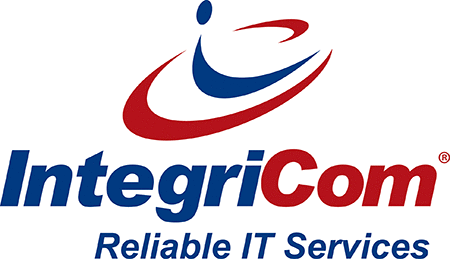Table of Contents
Introduction
Here at IntegriCom, we participate in peer SWOT analysis periodically with other IT business owners. This process allows us to gain fresh perspectives on our IT Managed Service Provider business, leveraging the diverse insights and experiences of our IT industry colleagues.
By working collectively to identify strengths, pinpoint weaknesses, uncover untapped opportunities, and assess potential threats as an MSP, we can make more informed strategic decisions, fortify competitive positions, and enhance the quality of services we offer our clients. Peer SWOT analysis stands as a testament to the power of collaboration in the ever-evolving MSP landscape, where staying ahead requires collective wisdom and a commitment to continuous improvement.
Learn more about the peer SWOT analysis process and how it elevates our performance as a IT managed service provider.

What is Peer SWOT Analysis of a Company?
SWOT analysis is a strategic planning tool used to assess the internal and external factors that can affect the performance and competitiveness of a company. SWOT stands for Strengths, Weaknesses, Opportunities, and Threats.
Here’s a brief overview of each SWOT component:
Strengths
These are the internal factors that give a company an advantage over its competitors. Strengths can include factors like a strong brand reputation, a talented workforce, efficient processes, unique technology, or a large customer base.
Weaknesses
Weaknesses are also internal factors, but they are areas where a company may be lacking or performing below par. Common weaknesses might include outdated technology, a high employee turnover rate, poor management, or limited resources.
Opportunities
Opportunities are external factors in the business environment that a company can potentially leverage to its advantage. These could be emerging markets, changes in consumer preferences, technological advancements, or shifts in regulatory policies.
Threats
Threats, like opportunities, are external factors, but they represent potential risks or challenges that a company might face. Threats can include factors such as intense competition, economic downturns, supply chain disruptions, or legal and regulatory hurdles.
SWOT analysis is typically conducted through a structured assessment process involving data collection, analysis, and interpretation. The goal is to identify an organization’s strengths and weaknesses so that it can take advantage of opportunities and mitigate potential threats. By understanding these factors, a company can develop more informed strategies to enhance its competitiveness and overall performance in the market.

Why is a Peer SWOT Analysis Important?
SWOT analysis is important because it provides a structured framework for strategic planning, decision-making, and self-assessment. It empowers businesses to understand their current position, adapt to change, and make informed choices to achieve their objectives. Whether for a startup, a small business, or a large corporation, SWOT analysis is a valuable tool for achieving success in a dynamic and competitive business environment.
A Peer SWOT analysis is important for several key reasons:
Strategic Planning
SWOT analysis is a fundamental tool in the strategic planning process. It helps businesses identify their current position, set objectives, and develop strategies to achieve their goals. By examining strengths and weaknesses (internal factors) and opportunities and threats (external factors), companies can make more informed decisions about where to focus their efforts.
Informed Decision-Making
SWOT analysis provides a structured framework for decision-making. It helps businesses prioritize initiatives, allocate resources effectively, and choose between various courses of action. This informed decision-making process minimizes the risk of making hasty or uninformed choices.
Internal Assessment
By identifying strengths and weaknesses, SWOT analysis encourages businesses to take a critical look at their internal operations. This self-awareness can lead to improvements in areas that may have otherwise been overlooked, such as processes, talent management, or infrastructure.
External Assessment
SWOT analysis helps businesses assess the external environment in which they operate. Recognizing opportunities allows companies to capitalize on emerging trends, expand into new markets, or leverage new technologies. Identifying threats enables proactive risk management and mitigation.
Adapting to Change
In today’s rapidly changing business landscape, adaptability is crucial. SWOT analysis helps businesses stay agile by recognizing shifts in the internal or external environment early on. This adaptability is essential for survival and long-term success.
Resource Allocation
Efficient allocation of resources is a critical aspect of business management. SWOT analysis aids in identifying areas where resources should be allocated or reallocated. It ensures that time, budget, and manpower are directed toward initiatives that align with the company’s strategic objectives.
Enhanced Competitiveness
SWOT analysis helps businesses gain a competitive edge. By leveraging strengths and opportunities while mitigating weaknesses and threats, companies can position themselves more effectively in the market. This leads to increased competitiveness and improved market share.
Continuous Improvement
SWOT analysis is not a one-time exercise; it’s an ongoing process. Regularly revisiting and updating the analysis allows businesses to adapt to evolving circumstances, fine-tune their strategies, and maintain a culture of continuous improvement.
Note that these SWOT components are very much like what we use for clients through our vCIO services.

Benefits of Peer SWOT Analysis for MSPs
By pooling our knowledge, experience, and perspectives, IT industry peers in leadership can create a unique synergy that goes beyond individual capabilities.
The benefits of peer SWOT analysis for MSPs include:
- Broader perspective and diverse insights.
- Objective evaluation of strengths and weaknesses.
- Identification of untapped opportunities and threats.
How peer SWOT Analysis Leads to More Informed Decision-Making
SWOT analysis enhances decision-making by leveraging diverse perspectives, fostering objectivity, validating assumptions, and providing a more comprehensive understanding of the business environment. It equips IT business owners with the insights and knowledge needed to make well-informed, strategic decisions that can lead to improved business performance and competitiveness.
Peer SWOT analysis leads to more informed decision-making through several key mechanisms:
Diverse Perspectives:
When IT business owners collaborate for SWOT analysis, they bring diverse perspectives and experiences to the table. Each participant may have a unique viewpoint on the industry, market trends, and business strategies. This diversity of thought helps ensure that decisions are not limited to a single viewpoint but are enriched by multiple insights.

Objective Evaluation:
Peer SWOT analysis encourages an objective evaluation of each other’s businesses. Participants are more likely to provide honest feedback and assessments because they do not have the same emotional attachment to the business as the owner does. This objectivity leads to a more accurate assessment of strengths, weaknesses, opportunities, and threats.
Benchmarking:
Comparing one’s own business to those of peers helps in benchmarking. IT business owners can gauge where they stand relative to industry standards or best practices. This benchmarking provides context for decision-making, allowing businesses to set realistic goals and priorities.
Identification of Blind Spots:
Peer SWOT analysis can reveal blind spots that an individual business owner may have missed. Colleagues can identify weaknesses or threats that were not apparent to the owner, providing a more complete picture of the business’s vulnerabilities.
Validation of Assumptions:
Business owners often make assumptions about their strengths and weaknesses. Peer analysis helps validate or challenge these assumptions. For instance, an owner might assume their customer service is excellent, but peer feedback might reveal areas for improvement.
Comprehensive Risk Assessment:
Identifying threats and vulnerabilities is a critical aspect of SWOT analysis. When peers are involved, a broader range of potential threats can be considered. This comprehensive risk assessment allows businesses to develop more robust risk mitigation strategies.
Enhanced Strategic Planning:
Informed by the insights from peer SWOT analysis, businesses can develop more comprehensive and well-rounded strategic plans. These plans are grounded in a deeper understanding of the internal and external factors affecting the business.
Prioritization of Actions:
With input from peers, businesses can prioritize actions more effectively. Decisions about where to allocate resources, invest in improvements, or seize opportunities become clearer when informed by collective insights.
Enhanced Creativity and Innovation:
Peer SWOT analysis can inspire creativity and innovation. Colleagues may suggest novel solutions or approaches that the business owner had not considered. This creative input can lead to more innovative and effective strategies.
Risk Mitigation:
By identifying potential threats collectively, businesses can develop proactive risk mitigation plans. These plans enable businesses to be better prepared for unexpected challenges and disruptions.
Peer SWOT Analysis: Building Stronger MSPs Through Collaboration
IntegriCom is a stronger organization because of our participation in SWOT analyses. Not only receiving the SWOT analysis on our company, but also being on the team to perform this process on peer IT companies throughout the country. Every time we learn something to make us better.
And we apply what we learn!
Summary
The SWOT analysis, which any company should experience and learn from, is very beneficial. The process has increased the operational maturity of our organization. Do you want to know more about how IntegriCom can help your organization improve in technology maturity? Please contact us for an in-depth security assessment, and we are happy to share more about our experience and knowledge with the SWOT analysis.



